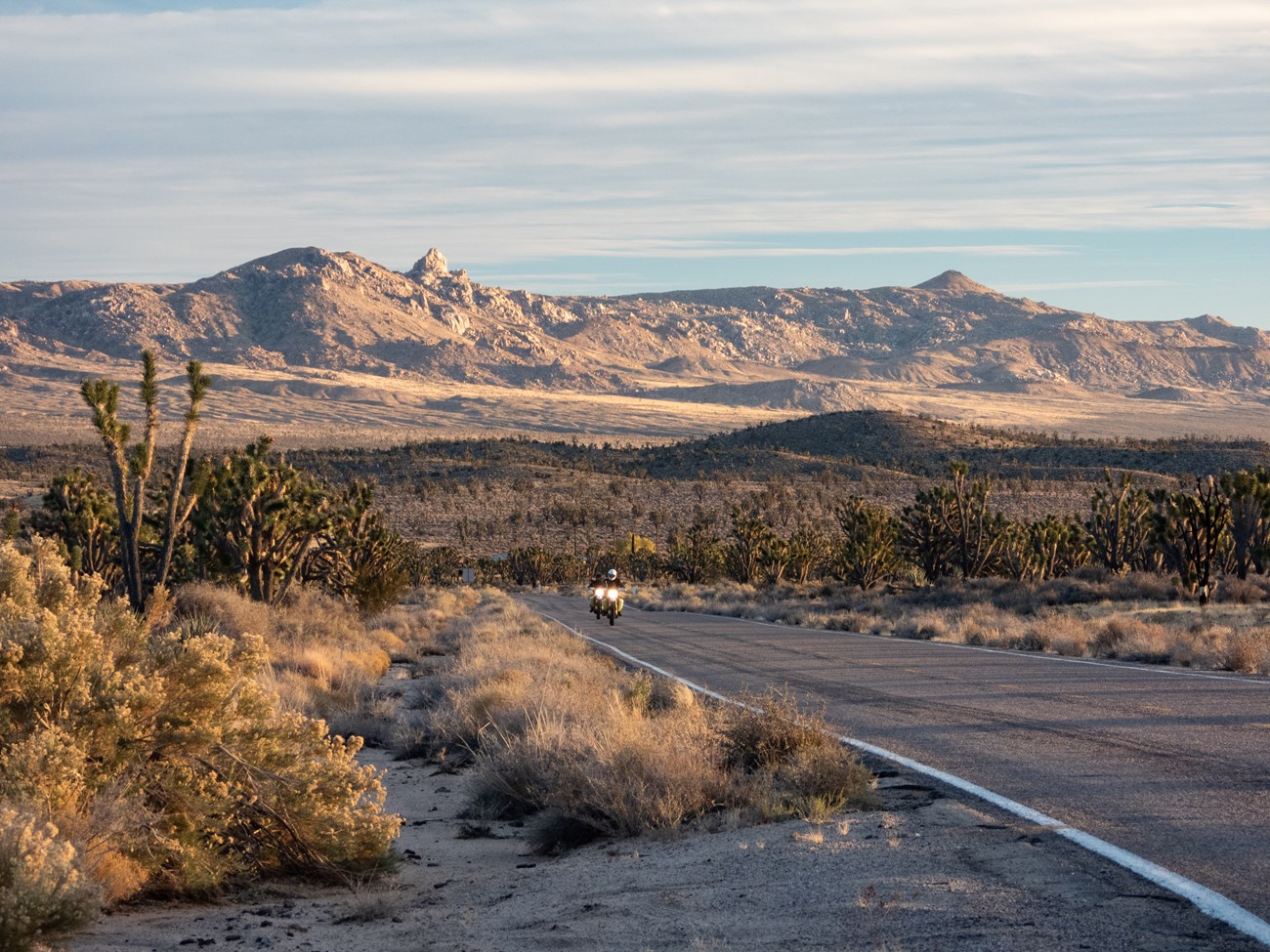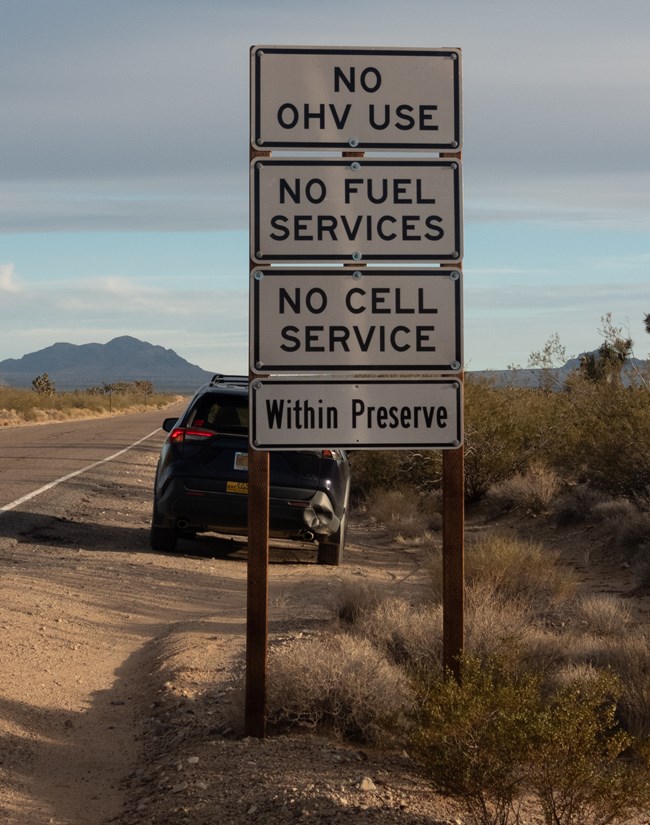Last updated: December 23, 2022
Article
Desert Driving Safety

NPS / K. Lewandowski
Desert Driving Pro-Tips
You are responsible for your own safety.
- 24-hour Emergency or Missing Persons (909) 383-5651 (Intergency Dispatch)
- Non-emergency use (760) 252-6100 during business hours.
Staying with your car is the most important thing you can do in the event of an emergency. While not often, people have died from exposure trying to walk back to the paved roads.
Appropriate vehicles and equipment in good working order with adequate supplies are critical.
- Roads are narrow, sandy, rocky, and winding. No commericial vehicles are allowed along preserve roads.
- Travelers need to be prepared for their trip and understand their skills and the conditions.
- Unpaved roads vary in difficulty. Not all vehicles are right for travel for off-pavement travel in the preserve.
Please do not move barricades or bypass signed or coned-off closures. Park rangers are patrolling closed roads, turning back travelers, and issuing citations.
Visitors to the north side of the preserve can fill up in Barstow, Baker, Cima, Primm, Jean, Henderson, or Las Vegas.
Visitors coming from the south should fill up near 29 Palms, Amboy, or take a detour on Interstate 40 to the nearest gas stations in Fenner or Ludlow. Needles (east) or Barstow (west) are farther but also have gasoline. The preserve is filled with long inclines and mountains that will drain your tank, so it's best to come with a full tank if you want to explore without running on E.
For more information, see Restaurants - Mojave National Preserve (U.S. National Park Service) (nps.gov)
Potable water can be found at the following locations:
-
Kelso Depot bathhouse
-
Hole in the Wall Visitor Center
-
Hole in the Wall Campground
Outside of those locations, there are no other public water facilities in the preserve.
Keep an eye out. Watch for tortoises crossing the road, especially during rainy weather. Tortoises are attracted to puddles that form on roadways during rainstorms.
Always look under your car before driving away. Tortoises enjoy resting in the shade of parked cars.
Keep vehicles on established roads only. Vehicles will crush tortoise burrows, killing the tortoises and eggs within.
Be a tortoise crossing guard! Never pick up a tortoise unless it is immediate danger. From a distance where the animal's behavior remains unchanged, watch to ensure the tortoise makes it across the road safely. Take a GPS from your phone and email your sighting to neal_darby@nps.gov. Every tortoise is important as they are threatened. The NPS is currently monitoring desert tortoises and relies on sightings from the field to help protect this cool animal.

NPS / K. Lewandowski
Recommended Safety Equipment
A high clearance 4x4 with tires designed for off-pavement use is the most important safety item you need.
✔️ Return plan filed with friend or relative.
✔️ Shovel to smooth off cut banks or dig out of sand
✔️ Jack to lift vehicle with a base that can be set up on rocky or sandy ground
✔️ All-terrain spare tire
✔️ A second spare tire
✔️ Extra food, water, and any needed medications to last several days
✔️ Hot/cold weather clothing
✔️ Headlamp or flashlight
✔️ Satellite phone or satellite messenger
Appropriate vehicles and equipment in good working order and adequate supplies are critical. Roads are narrow, sandy, and winding. Travelers need to be prepared for their trip. Unpaved roads vary in difficulty. Not all vehicles are right for travel for off-pavement travel in the preserve.
Most rescues involve vehicles stuck in the sand. Other rescue reasons include flats where rocks ripped up tires only rated for street use. Additional reasons include vehicles getting stuck in mud or high-centered on uneven road beds, or vehicles suffering some kind of mechanical breakdown
